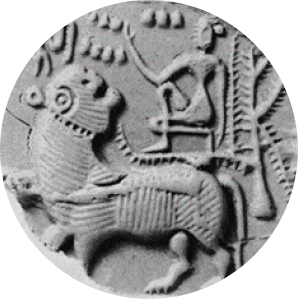Went up to the Sea of Galilee with the family, staying in Kfar Hittim, in the large house of an Israeli-Indian couple who seem to spend most of their time in India. We were 12; 8 adults and four kids. Kfar Hittim is near the place where Salah ad-Din’s forces won a decisive battle against the crusadors towards the end of the 12th century. It’s said that they won by cutting the crusadors off from the lake and then starting a wildfire where they were encamped. The battle decimated the crusador forces. Afterwards, more than 200 knights were beheaded, and the ordinary soldiers were enslaved. The king and some of the barons were shown mercy.
In 1948 the Palestinians were forced out of the area; the village of Hittin and others were evacuated or destroyed.
An earlier battle was fought in the time of Herod against rebels that were holding out in difficult to access caves in the cliffs of Arbel. They were defeated when Herod’s forces sent down soldiers in chests, who set fires at the cave entrances and smoked out the rebel fighters and their families.
The same caves must have been an ideal domicile for the paleolithic people who earlier inhabited them, in an area then teeming with wildlife.

The whole area is geologically extreme, a landscape formed by extinct volcanos and earthquakes, the sheer cliffs plunging almost 400 meters – and the lake itself well below sea level. It’s a small part of the Syrian-African rift – a feature that goes all the way down to Africa’s great lake system. A great tear in the earth’s crust, which till today is disturbed by constant tremors, though most of them are too faint to feel. We looked down over the valley from the edge of one of the two “Horns” of Hittim, as these high cliffs at Arbel were known.
The Climate Book
I pre-ordered The Climate Book, by Greta Thunberg from Kobobooks, for my ereader and it arrived in time for the weekend. It looks promising: a kind of one-stop-shop climate primer with chapters by more than a hundred experts, thinkers and writers.
Villa Triste
I enjoyed this Patrick Modiano novel as much as another of his that I read last year. His novels are often short, which suits me, as I read very slowly in French and often need to consult my Kobo reader’s French dictionary. I like his particular style of “auto-fiction” and will probably read more of his books.
Lupin
A similar exercise is watching French TV series on Netflix. It’s quite laborious as I need to stop the video often to absorb the subtitles; an hour long show can last a couple of hours, that way. Eventually I will hopefully calm down and stop trying to catch every mumbled throw-away bit of idiom. I tend to approach languages as I did when learning Sanskrit – a mistake, no doubt.
“Lupin” itself is entertaining, though often quite ridiculous. I don’t know if it will continue to hold my interest.
India
During the weekend we were discussing our travels. M said that her impression of India was that, more than in other places, she felt that people were very close to the earth and to the basic realities of life. I know what she means, but I’m not sure that it’s true anymore. It seems to me that many Indians are caught up in illusions and frivolities that have little to do with basic needs.
They can apparently now afford to forget all about the “realities of life”, and instead promote a toxic blend of nationalism and religious fundamentalism. Here are people trying to trying to persuade the courts that mosques that have been standing for a millenium are actually Hindu temples; or that somewhere in the Taj Mahal is a secret cupboard crammed with the Hindu idols pillaged from an earlier temple. Inspired by the destruction of the Babri mosque in Ayodhya, They would like to see thousands more mosques either destroyed or converted into temples.
Fanatics there always are; the problem is that in modern India they are increasingly supported by the government, the police, and sometimes by the judiciary. Fanatics are no longer a small minority but the power in the land. They enjoy popular support. The situation has many parallels to Israel, whose government is also increasingly in the hands of rightwing pyromaniacs. But there are differences. The political agenda here is different and more focused. It’s less about religion, more about colonisation. Zionism and Hindutva may both be nationalistic ideologies that seem to hark back to an earlier era, but they are not quite comparable.
